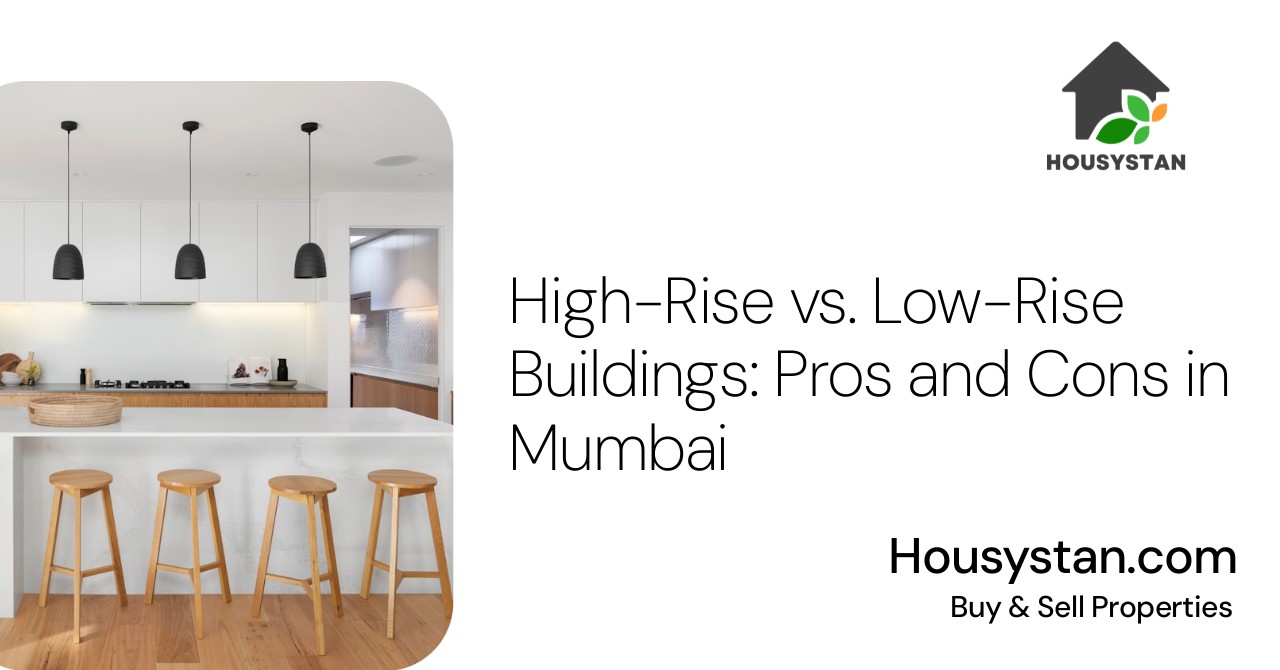High-Rise vs. Low-Rise Buildings: Pros and Cons in Mumbai
Read latest blogs and articles from Housystan

The Information mentioned here was last updated on:
4/12/2025High-Rise vs. Low-Rise Buildings: Pros and Cons in Mumbai
Mumbai, known for its vibrant lifestyle and ever-expanding skyline, offers a wide array of residential options. Choosing between high-rise and low-rise buildings is a significant decision for homebuyers and investors in this dynamic metropolis. Each type presents unique advantages and challenges, making it essential to weigh the pros and cons before making a choice in Mumbai’s real estate landscape.
Advantages of High-Rise Buildings in Mumbai
- Verified Tenants/Buyers
- Unlimited Property Listing
- Zero subscription/charges fee
High-rise buildings dominate the Mumbai skyline, offering breathtaking views of the Arabian Sea, cityscape, and lush surroundings. These towers often feature modern amenities such as rooftop pools, fitness centers, and 24/7 security, making them highly desirable for urban dwellers. Their vertical design allows for efficient land use, accommodating more residents and offering spacious apartments with natural light and ventilation. Additionally, high-rise buildings frequently stand close to commercial hubs, ensuring effortless connectivity to business districts, shopping centers, and entertainment hotspots. For those seeking a cosmopolitan lifestyle and panoramic vistas, high-rise developments become the preferred choice in Mumbai.
Disadvantages of High-Rise Buildings
Despite their appeal, high-rise towers in Mumbai come with certain drawbacks. Higher maintenance costs, dependence on elevators, and longer evacuation times during emergencies can be concerns. Residents may experience less privacy due to the large number of occupants. Some individuals also find the sense of community less pronounced in these towering complexes compared to smaller buildings. Moreover, delays during peak hours in elevators and increased waiting times can inconvenience daily routines.
Pros of Low-Rise Buildings in Mumbai
Low-rise buildings, often nestled within peaceful neighborhoods, provide a more intimate and community-oriented environment. These properties generally have fewer residents, fostering neighborly bonds and a sense of belonging. Ground access is easier, and maintenance costs are typically lower. Low-rise developments often feature spacious layouts, personal gardens, and open spaces, making them ideal for families and those who cherish tranquility. Proximity to parks, schools, and local markets further enhances their appeal, especially in residential pockets like Bandra, Juhu, and Chembur.
Cons of Low-Rise Buildings
While low-rise buildings offer charm and peace, they may lack certain modern amenities found in high-rise complexes. Security features, recreational facilities, and advanced infrastructure can be limited. The scarcity of such projects in prime locations also means higher property prices and reduced investment options for buyers seeking central Mumbai addresses. Additionally, low-rise buildings may not provide the sweeping city views that many desire.
Conclusion
When comparing high-rise and low-rise buildings in Mumbai, consider factors such as lifestyle preferences, location, amenities, and budget. Both options have distinct merits and limitations. Evaluate your priorities and long-term goals to make an informed decision that complements your aspirations in Mumbai’s ever-evolving real estate market.